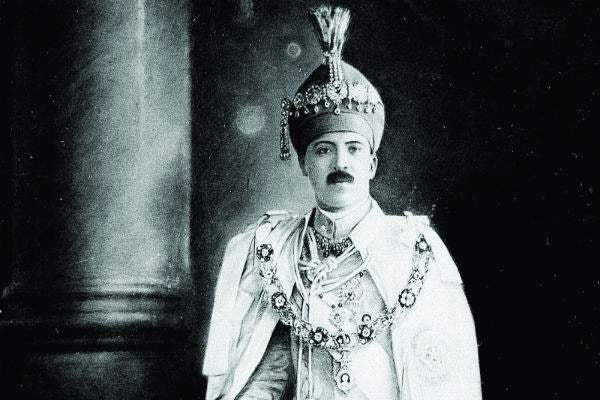
An epic dispute spanning decades, sovereign states and at least one lost empire opens a window on to the growing legal area of contentious trusts, writes Christopher Jackson
His Exalted Highness the Nizam of Hyderabad was anxious. The richest man in the world had reason to be on edge, as he was about to experience one of the most tremendous reversals in human history.
To be rich in the Nizam’s days was not so much a matter of credit cards and shareholdings as gold bullion and jewels. It was said that the Nizam owned £400 million worth of jewels – enough to pave the streets of Piccadilly. He was not without the absolute ruler’s bluff hypocrisy: though he had worn the same fez for 35 years and tended to flaunt his everyman poverty, he had also acquired an unchecked penchant for sex and – significantly for the ensuing decades-long litigation – the creation of heirs.
This didn’t stop him considering himself a devout Muslim. This had created ambivalence in him when the Indian Independence Act 1947 was signed, creating the state of Pakistan. Under that legislation, the great principalities of India – of which Hyderabad was the largest and richest – had the option of joining India or Pakistan. The Nizam’s faith inclined him to plump for the latter. However, the potentate then sought a third option: to remain independent. Even at this distance, one can taste the catastrophe of that choice: the absolute ruler was at odds with popular opinion in a predominantly Hindu state. India – far superior in troop numbers – launched Operation Polo, annexing his kingdom.

As the Indian army closed in, he transferred the then vast sum of £1 million into an account in National Westminster bank in London. Crucially, he did so via an agent – the first High Commissioner of the newly sovereign state of Pakistan – Habib Ibrahim Rahimtoola. It is still not clear today whether the money was a gift, intended to help the Pakistani army defend his kingdom, or a panicked attempt to squirrel away crucial funds. After the transfer the Nizam sought to reverse it, claiming that Rahimtoola had not been authorised to make it – the money, the Nizam argued, had been held in trust for him.
This money would grow to be worth £20-80 million and is now the basis for an epic dispute between the Nizam’s heirs and the states of India and Pakistan. It stands as an illuminating case in an area that Spear’s covers in this edition for the first time.
What the Nizam didn’t know is that he was – albeit unwittingly – at the crest of what would become a significant growth area in the law: that of contentious tax and trusts. It’s an area that derives its strength from the stubborn facts of life. Death will not make exceptions and everyone’s fortune in the end must be bequeathed. ‘One good thing about the dead: they make room,’ as John Updike put it. But the grim fact of mortality also means work for a relatively new breed of super-lawyers who slug it out in the Cayman or Bahamian sunshine.
Jeremy Gordon, a contentious trusts partner at Farrer, explains this growth: ‘It’s a time-lag issue: there was a huge accumulation in private hands in the last 20 years of the 20th century. The wealth creators who controlled the wealth and the trusts have started to die, and tensions rise at the next generational level.’

Speaking in relation to the Nizam case, Emily Exton, head of dispute resolution at Forsters, tells Spear’s: ‘I rarely come across clients with “49 concubines and 150 illegitimate children”, but the fact that second and third families are now so commonplace is a big part of why trust and estate litigation is on the increase. Complex family structures mean complex relationships with emotions often running high – providing plenty of scope for disputes.’
Many patriarchs and matriarchs are unable to think about death, considering it taboo, and so fail to order their affairs. Or their families are large and the dispute is an inevitable offshoot of that fact. When the Nizam died in 1967, it all went back to that September in 1948. The Nizam had acted in haste, and now his money was effectively beyond reach.
As Lord Denning noted in the House of Lords in 1958, a deadlock had ensued: the Nizam claimed the money was his (as his heirs do today); the Pakistani government claimed it was subject to ‘sovereign immunity’ (its legal title could only be dislodged by successful litigation); India claimed it was entitled to the money as a successor state to Hyderabad.
Steve Kempster, a partner in Withers’ contentious trusts and estates group, says: ‘At a very high level, what this case is about is very common to lots of international families – it’s to do with challenging the nature of transactions: it’s a theme which crops up all the time.’

The contentious trusts world is indefatigable and does not pause to observe grief. The new Mukarram Jah – or to give him his full name, His Highness Mir Barkat Ali Khan Mukarram Jah Asaf Jah VIII – became the titular Nizam of Hyderabad in 1967, inheriting his grandfather’s claim to the monies at the National Westminster. A long-time inhabitant of Australia, married to a Turkish princess, the son of a Muslim who had ruled a largely Hindu principality, a man with significant assets held in the UK – he might be taken as an emblem of the globalised heterogeneity of the modern UHNW.
When it came to the money in the Natwest account, the nature of that asset had created the strong presumption that litigation would be carried out in the UK. But in other modern instances the asset might be more fluid, which can create a race between parties to litigate in the most favourable jurisdiction possible. In some cases, victory might be a simple matter of your lawyer getting to the right jurisdiction before your opponent’s – or perhaps, opponents’ – lawyers do.
Kempster continues: ‘It’s about selecting the jurisdiction that will work for you and will give you a more sympathetic hearing. You wouldn’t want to go to a Russian court to argue about trust law – so you want to pick a jurisdiction where you get a proper hearing and one where you can get enforcement.’
The stalemate in the Nizam case lasted for the rest of the millennium and the first decade of the next. Then, in 2013, seemingly out of the blue, Pakistan issued what Paul Hewitt of Withers, lawyer for Prince Mukarram Jah, describes to Spear’s as ‘a smash and grab’. Hewitt recalls with fondness the ensuing proceedings: ‘It was like sitting in a history lesson. The QCs were reading out cables from MI5 to Attlee, letters from Attlee to Nehru, and excerpts from people’s memoirs. It is a once-in-a-lifetime case.’
Hewitt explains that Pakistan’s bid for the money in 2013 was unexpected. In this instance, Cherie Blair was acting for the High Commissioner of Pakistan and claimed that her client ‘assert[ed] both full legal and beneficial entitlement to the funds’. But it is striking that, given the small amount of money (‘It wouldn’t be enough to pay for a fighter jet,’ remarks Hewitt), the Pakistani government felt the need to make the attempt at all.

But here again it is possible to discern parallels with the wider world of contentious trusts. Mark Lindley, a partner at Boodle Hatfield, points out that many disputes are not primarily money-driven. ‘The greatest challenges in contentious trusts and estates matters usually arise not from the legal issues, but from the dynamics between the individuals concerned,’ he says. ‘We often hear from our clients that it is “not about the money” and that there is some point of principle at stake. This can result in individuals behaving in ways that, objectively, seem irrational.’
Steve Kempster also notes that fairness in such an emotional context can be highly subjective. ‘It’s a challenge for the court to come to a fair decision,’ he says. ‘The judge will consider the evidence carefully, but their own personal views and sense of “fairness” will be factors that affect their decision.’
Again, the Hyderabad case had reached an impasse. Heirs and would-be heirs kept hatching from the late Nizam’s lewd past – 400 of them, and none disinterested in that Natwest account. By 2016, Mr Justice Henderson determined a series of applications and cross-applications brought by India, Prince Mukarram Jah, his brother Prince Muffakham Jah (now joined to increasingly complex proceedings), and Pakistan. He declined to come down on any one side, holding that Pakistan retained its right to pursue the claim but so could India and the princes. ‘Henderson wasn’t willing to strike anybody out,’ says Hewitt.
The matter will now go forward for hearings. With a range of top QCs lined up on every side, participants foresee a headachey case management conference – and, once it takes place, it will be some trial, some 18 months hence at the earliest.
The case of the Nizam and his heirs might be unusual in the way in which issues of sovereign immunity – and by association geopolitical considerations – impinge on the case. But at its heart, it is a trust dispute that has intriguing parallels with the more typical familial wrangling. ‘Interestingly, in the humdrum domestic disputes, the same emotion is there,’ says Hewitt. ‘At the heart of it it’s a trust argument – you see it in case after case’.
This invites us to consider India and Pakistan as warring siblings. But still the question keeps coming back: why does it matter so much to them? ‘The difficulty may be that the money has somehow acquired a totemic significance,’ Hewitt says. This, in turn, seems to open up on to a quirk of the human mind – we are not perhaps in the last analysis money-minded. As Mark Lindley implies, we are instead wired to attach significance to certain associations and objects – or even to stubborn ideas we might hold about ourselves.
For Jeremy Gordon, this all rings true: ‘It is Wagnerian – very often these big cases play out in different jurisdictions at the same time,’ he notes. ‘It’s palm beaches rather than dusty Dickensian London. It involves colourful personalities – one of the things that drew me into this area is the human interest element.’
Perhaps not all involve a man with 400 heirs and enough jewels to pave a central London thoroughfare. But all involve that ongoing curiosity, the human heart – which is, you might say, the most interesting thing of all.
Christopher Jackson is Head of the Spear’s Research Unit
To enjoy all this and more, go to your nearest WHSmiths travel store or independent news agent or visit www.spearswms.com/subscribe








